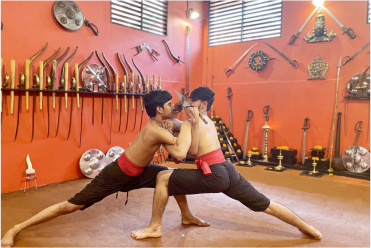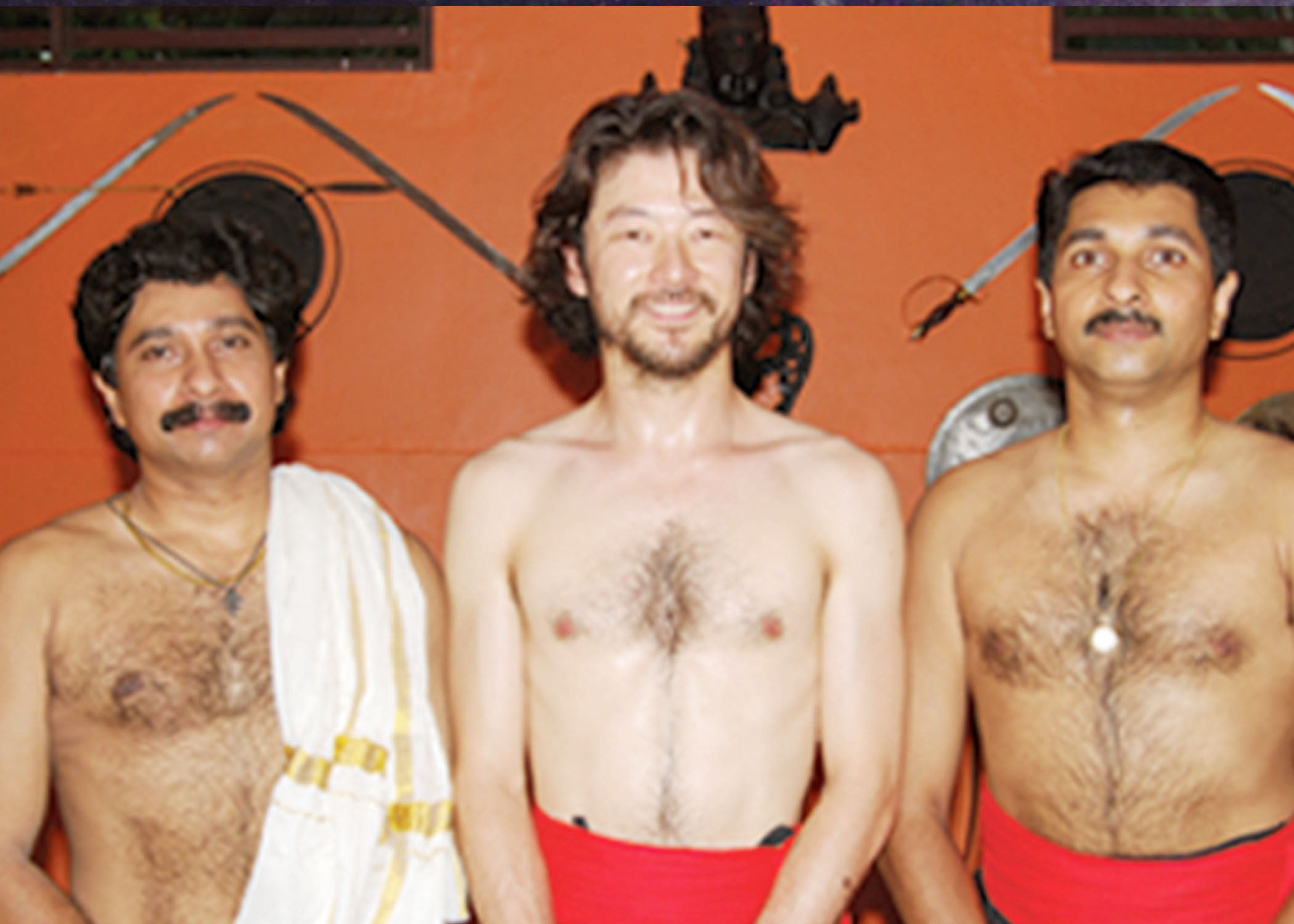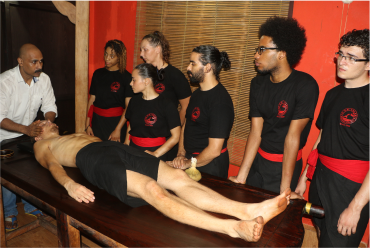Overview
Kalarippayattu having achieved the status of scientific method of training as early as in 4th century contributed largely to the development of socio-political setup and cultural fronts, of Kerala. The contemporary performing arts and those originated in the later years one way or other are closely knit with this tradition and have imbibed its exercises for physical agility, flexibility and ,movements. A close observation of Theyyam, Koodiyattam, Kathakali, Parichamuttukali, Velakkali, Kanniyarkali and even Mohiniyattam will prove the tremendous impact of this physical art on the performing and classical art forms of Kerala and those in neighbouring states. The Katchathirimmu of kalari tradition normally used for attaining highest flexibility of limbs is today used widely in all art forms both traditional and classical.
Presently, even the European theaters have evinced keen interest in this art for its body movements, steps, expressions and flexibility of limbs and apply the same in their balle, ball rooms and theatre performances. Legends say that around 525 AD an Indian Buddhist monk named Bodhidharama traveled to China and preached at the Shaolin temple. On finding the monks weak and listless, Bodhidharama taught them the eighteen hands of Buddha - a special set of exercises and from this evolved the Chinese art of Shaolin Boxing. These eighteen hands of Buddha were said to be derived from the eighteen adavukal (adavu = technique), which form the base of the Vadakkan or northern style of Kalarippayattu.



 Learn
more
Learn
more




 sunilkalari@yahoo.com
sunilkalari@yahoo.com +91 9995929999, +91 7998525555
+91 9995929999, +91 7998525555


